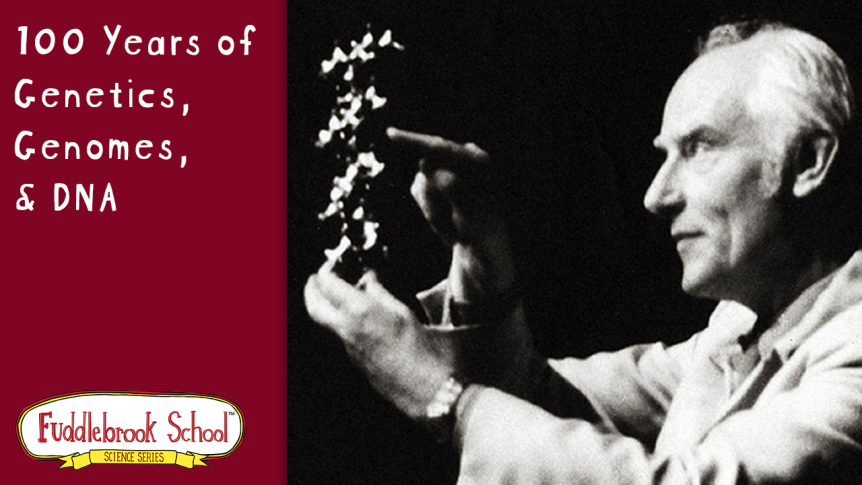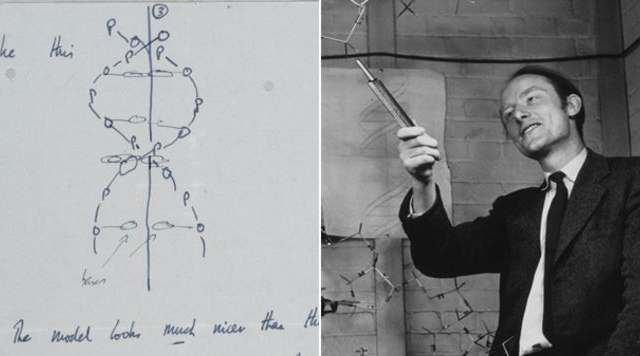This month we celebrate the 100th birthday of world-renowned scientist Francis Crick. Crick was born on June 8, 1916 in Northhampton, England. As a child, he was extremely inquisitive and read any book he could get his hands on. He found books on science topics the most interesting, which led to many “kitchen-experiments” as a child. As a teenager his love for mathematics, physics, and chemistry grew, and he attended the University College of London, obtaining a Bachelor of Science in Physics.
After World War II, Crick went on to obtain his PhD at Cambridge. It was there in 1951 that he met one of his greatest influences, James Watson. Using their combined knowledge of x-rays and model building, they discovered the structure of DNA, the famous Double-Helix model. Watson and Crick won the Nobel Prize for their research. Crick later made discoveries with RNA/DNA, chromosomes, and is credited with establishing the genetic code.

Thanks to Francis Crick we now know more than ever about genetics. In the Fuddlebrook book, A Family Visit, Liza, Bert, and Freddie meet Herman’s sister. She doesn’t look anything like Herman… how can that be? Mrs. Wigglebum teaches the gang that we inherit some traits from our parents, but are also unique in our own special ways, too. We also make a DNA model using Twizzlers®, toothpicks and colored marshmallows.
 Crick is an example of how developing a love for science at a young age can lead to great things! Who knows, maybe one of our young Fuddlebrook scientists will someday be honored for their accomplishments just like Francis Crick!
Crick is an example of how developing a love for science at a young age can lead to great things! Who knows, maybe one of our young Fuddlebrook scientists will someday be honored for their accomplishments just like Francis Crick!


